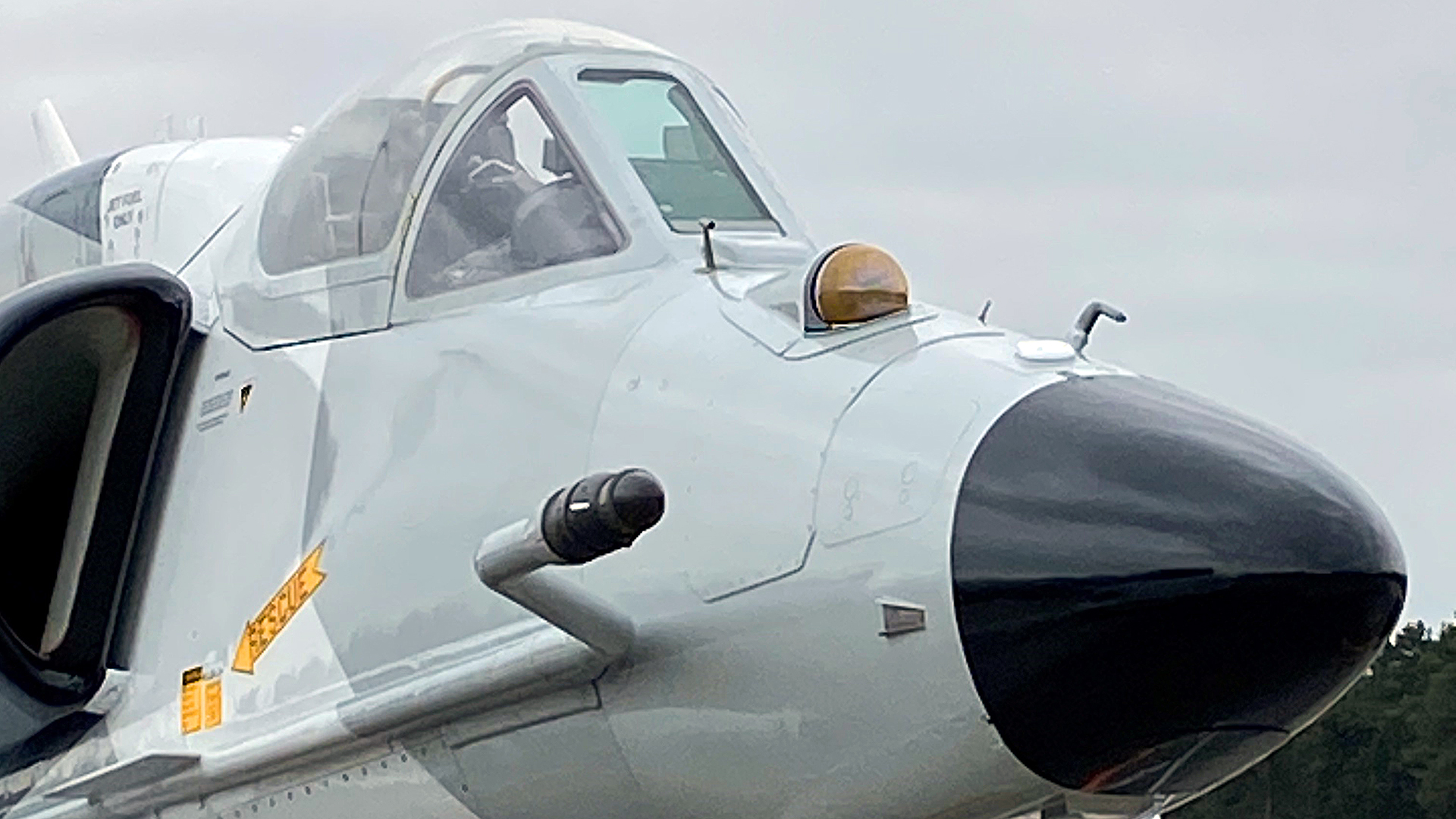Top Aces, the Canada-based advanced training provider, that specializes in ‘red air’ adversary support, has shown off one of its Cold War-era A-4 Skyhawk jets fitted with an infrared search and track (IRST) system. The development brings the veteran A-4 right up to date in terms of the kind of threat sensor replication it can offer, especially as the company has already been adding advanced active electronically scanned array (AESA) radars to the same type.
In a post on X today, Top Aces provided a photo of one of the A-4Ns that it has based at Wittmundhafen in northern Germany. The jet has the prominent ‘eyeball’ fairing for the new IRST sensor mounted immediately ahead of the cockpit canopy. The caption states that “Top Aces has successfully integrated an infrared search and track (IRST) capability onto our A-4 Skyhawk platform via our open-architecture Advanced Aggressor Mission System (AAMS).”
In the past, we had surmised that, once Top Aces introduced an IRST as part of AAMS, it would opt for one of the growing number of podded solutions, making it a little surprising that the system is internally installed in the already cramped airframe of the A-4. On the other hand, it’s noteworthy that low-cost internal IRST systems are now also increasingly being offered.
Significantly, this is a traditional IRST, the first of its kind that we have seen on any commercially operated adversary aircraft, and not a simpler staring sensor. Outwardly, the sensor appears very similar to the Selex ES IRST found on the Saab Gripen E fighter, among other applications. Pitched together with Northrop Grumman, the same sensor competed in the past against the IRST21 from Lockheed Martin. Since then it has also shown up in various advanced drone-based applications.
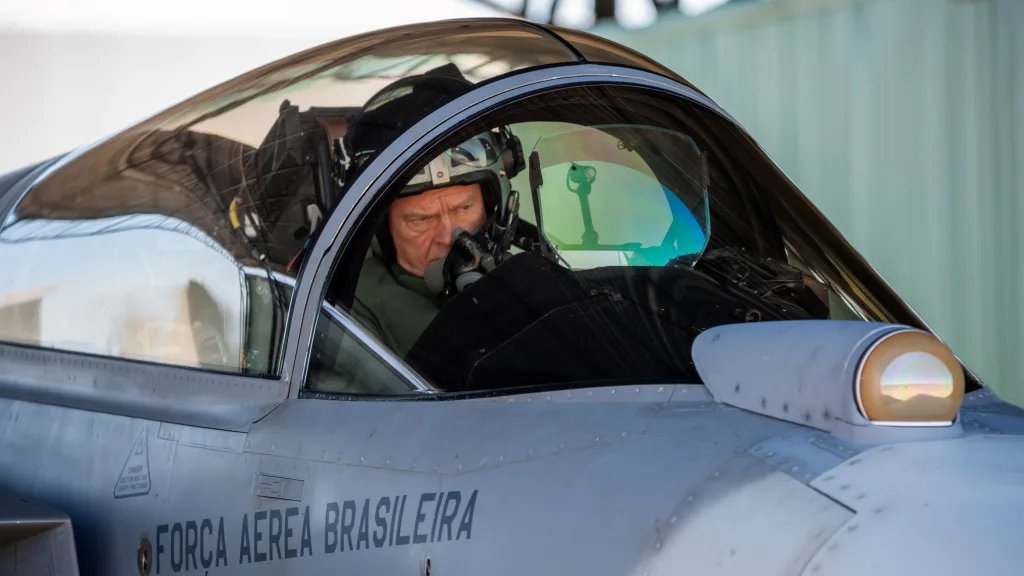
The War Zone has reached out to Top Aces to find out more about the IRST, including the particular type of sensor that has been fitted and how exactly it will be used. We have also asked if the jet in question has both IRST and AESA fitted, although the gloss black radome would suggest it’s one of those that have undergone the radar upgrade.

When the company began flying its A-4s with AESA radar installed, it was understood that the aggressor jets were to be used for adversary air training on behalf of the German Armed Forces. Under the latest contract, Top Aces has been providing this training since January 2022. Its announcement of that same deal references the AESA radar and IRST, suggesting that Germany will use both capabilities to improve the quality of its training.
At last count, Top Aces had seven A-4Ns in Germany.
Installing these high-end capabilities in a jet as old as the A-4 — first flown in 1954 — has been enabled by Top Aces’ aforementioned Advanced Aggressor Mission System (AAMS), a proprietary open architecture system it began developing in 2017 and which the company now offers to clients in both Europe and North America. AAMS is also integrated into Top Aces’ F-16 aggressor fleet, which you can read more about here, although, despite such plans being announced, these jets have not been seen with IRSTs fitted.
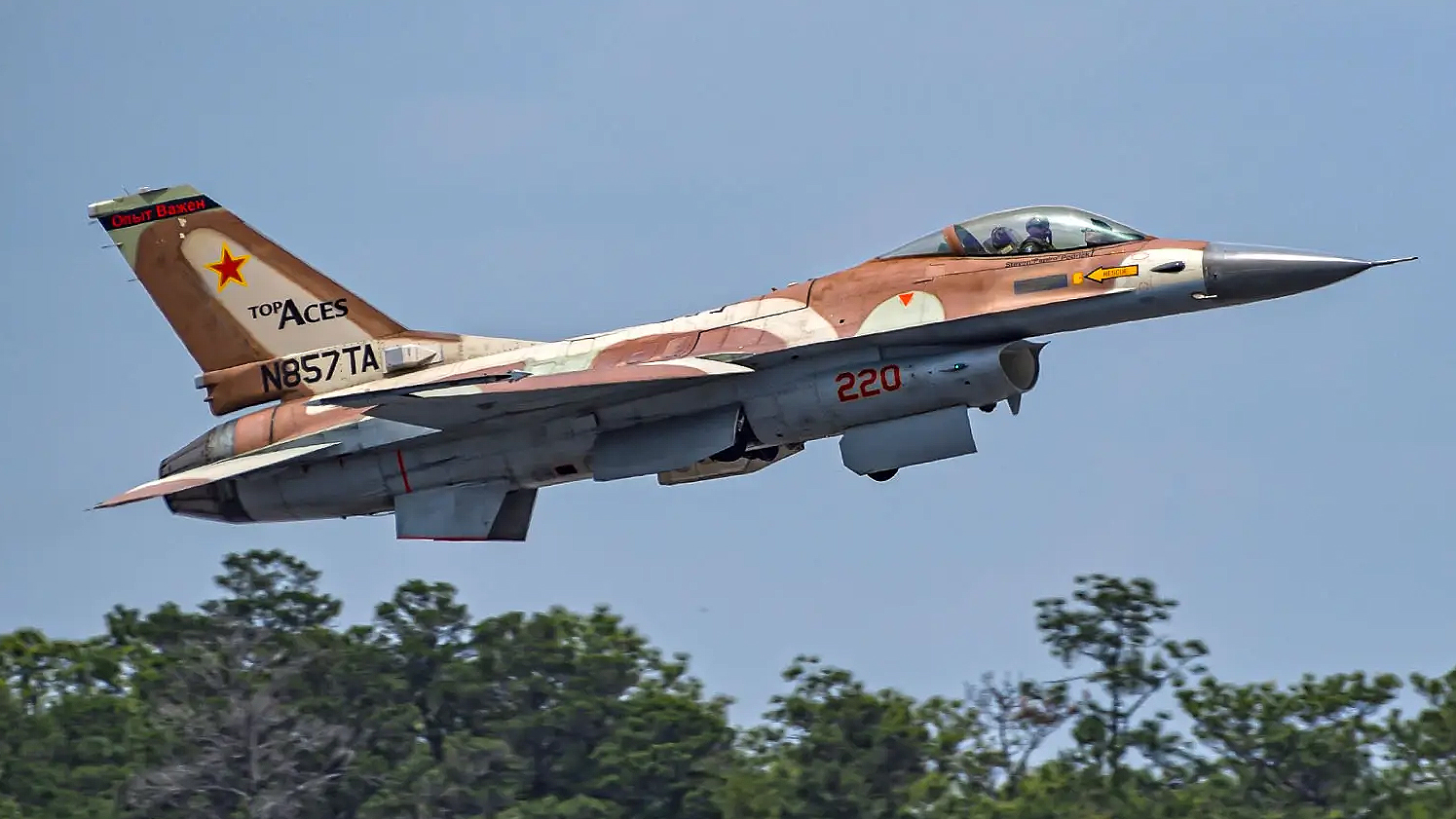
The advantages of having an AESA radar on an aggressor aircraft are something that we have explored widely in the past, also in the context of Top Aces’ upgrades. Simply put, compared to a traditional mechanically scanned array of the same size, an AESA can detect and track targets at increased ranges, with improved target discrimination and identification. These kinds of sensors are also better able to pick up low-flying targets with reduced radar signatures, such as cruise missiles or even stealthy platforms.
As for the IRST system, this is an option that’s also becoming increasingly popular with red air providers.
For an operational fighter, the key advantage of an IRST system is its ability to detect and track aerial targets via infrared emissions. As a passive sensor, an IRST doesn’t emit any telltale radio-frequency (RF) emissions, so the target will have no idea that it’s being detected and tracked. At the same time, IRSTs are immune to electronic warfare aimed at disrupting radar and other RF emissions, making them especially relevant in dense electronic warfare environments.
Within U.S. and allied air arms, IRSTs remain fairly uncommon, although there are ongoing efforts to remedy that, notably via podded efforts fielded by the U.S. Air Force and U.S. Navy. However, these same types of sensors are already widely used by potential adversary air forces, including those of China and Russia. With that in mind, the utility of an aggressor aircraft that can replicate those particular threats is obvious, and one that has increasing importance right now.
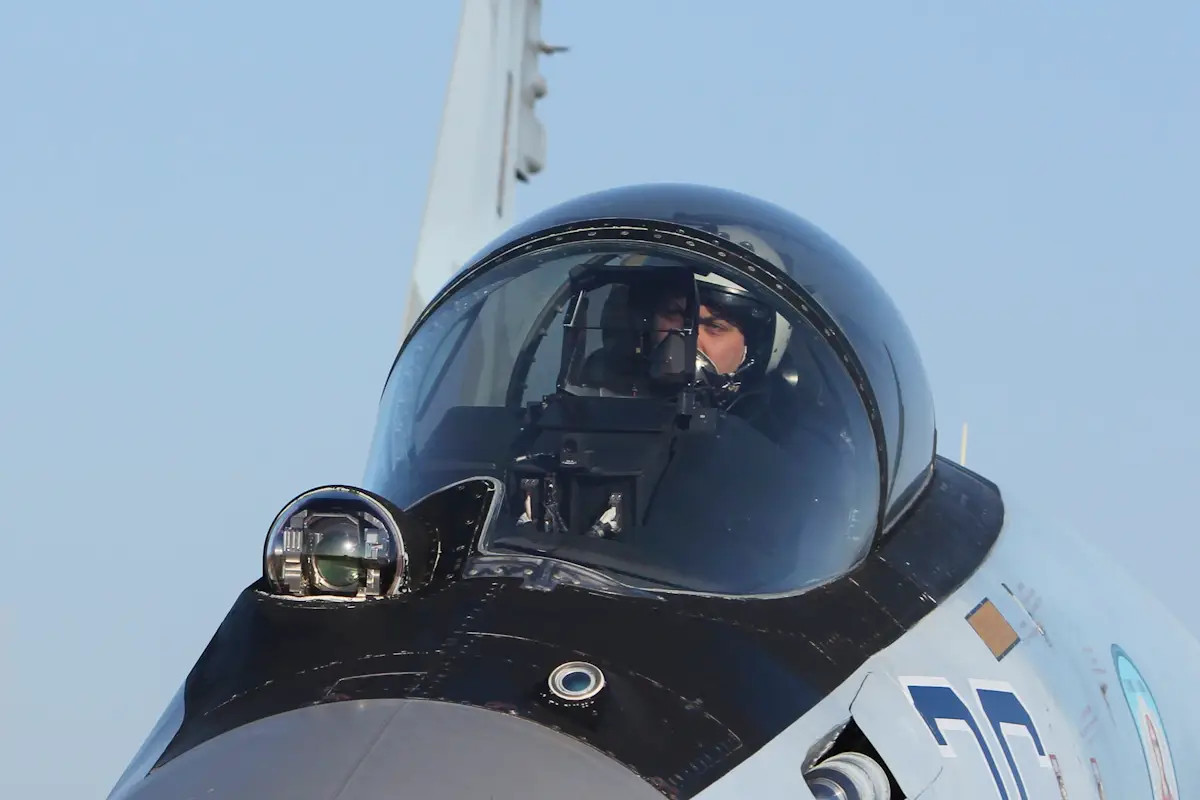
For the Luftwaffe, in particular, the latest adaptation of the A-4 should prove especially useful. The German air arm is on the brink of a modernization drive, which will bring more advanced Eurofighters fitted with their own extremely powerful AESA radar, not to mention a portion of the same jets dedicated to electronic attack, and F-35A stealth fighters. A more capable aggressor type will help push the pilots of all these types to their limits.
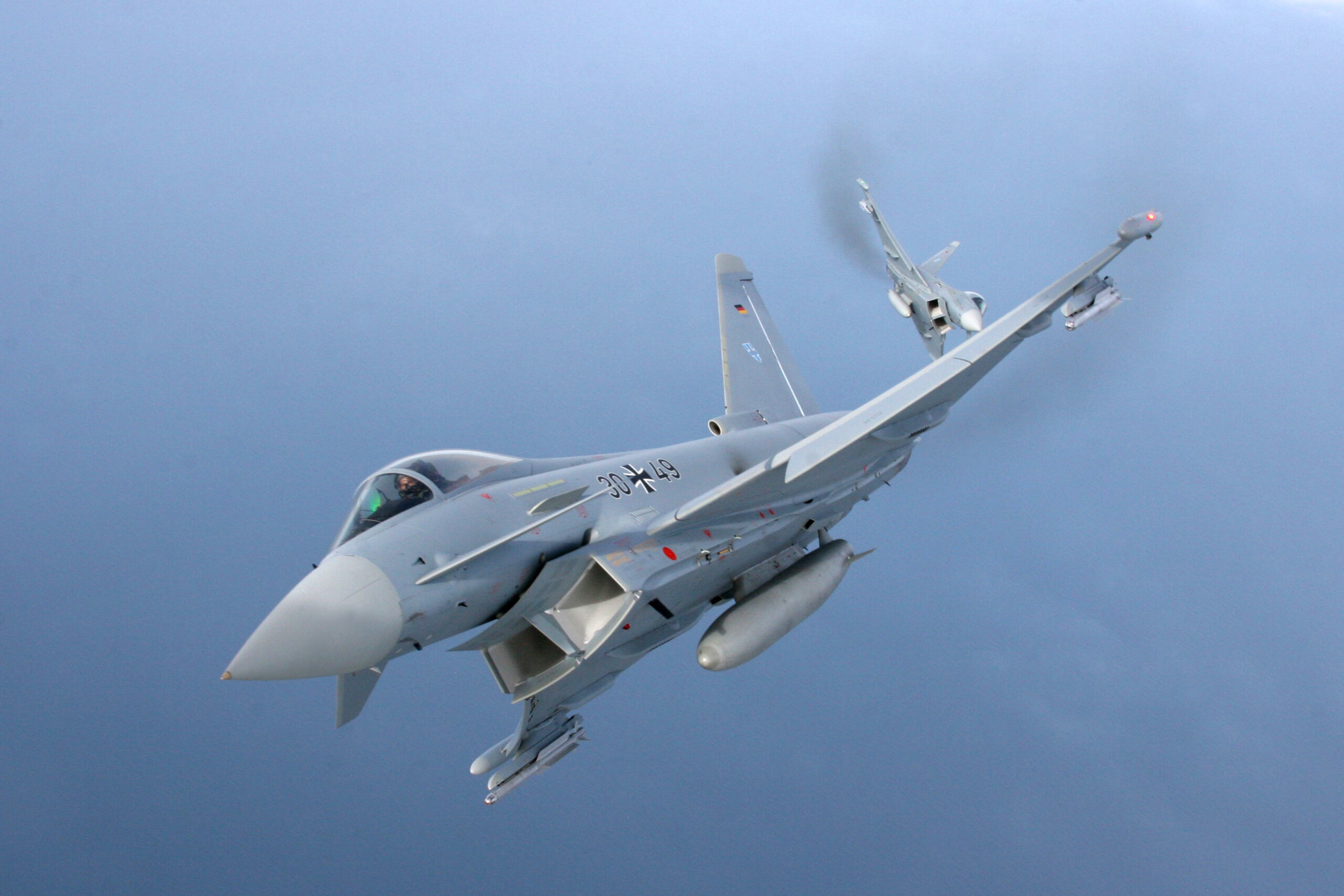
At the same time, putting the IRST (and AESA) systems on an A-4, for example, helps bridge the capability gap in terms of avionics between what is a 1950s-era design and the kinds of advanced fourth-generation threats that Western pilots might face.
An A-4 should also be much cheaper to operate than a fourth-generation aggressor and although it is lacking in terms of performance, it’s no slouch and its agility and small size mean it’s far from an easy target in dissimilar air combat training scenarios.
Tactical Air Support, another private red air contractor, has installed IRST sensors on its upgraded F-5AT aggressor jets. In an earlier statement to The War Zone, that company explained: “Some of the most advanced adversary aircraft that our U.S. fighter pilots might face in combat have a passive jam-shoot capability with IRST technology.”
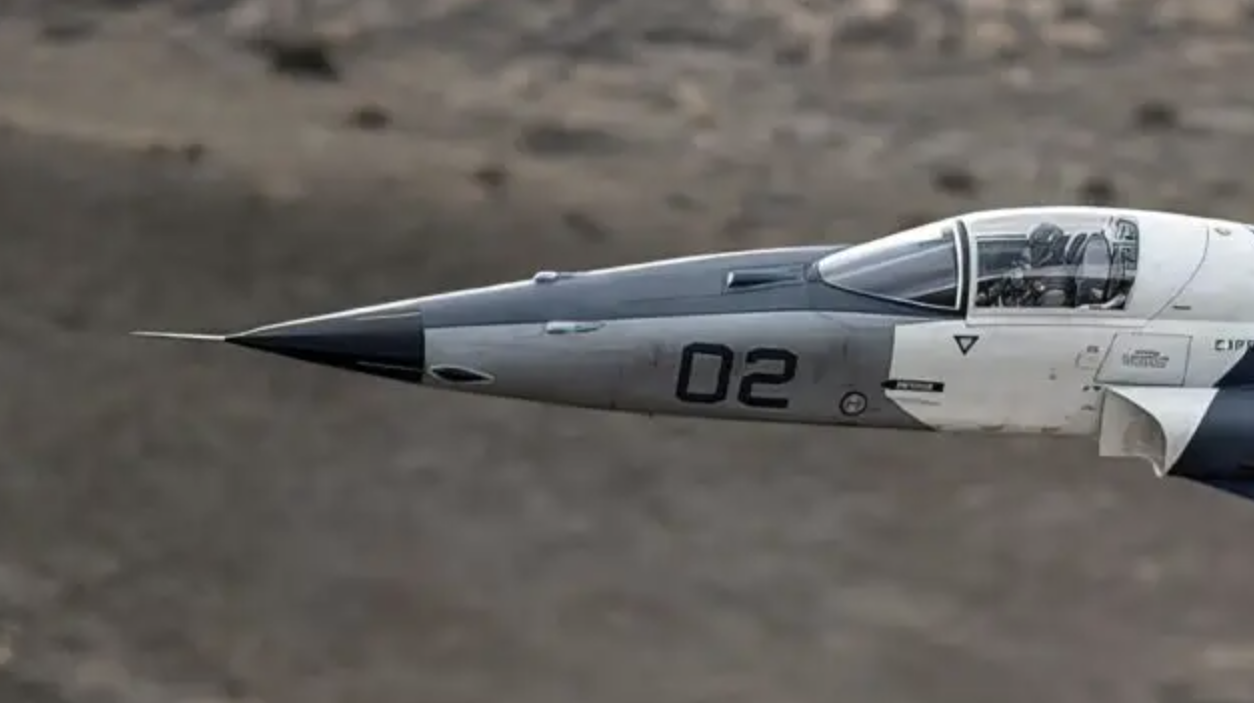
There are very compelling reasons for Top Aces to integrate AESA and IRST sensors into its A-4 fleet, especially when both those capabilities are available in the same airframe. It will be intriguing to see whether the same company’s U.S.-based F-16s also start sporting the same sensor setup.
In the meantime, the upgraded A-4s will provide the German Armed Forces — and potentially other clients — with a better representation of some of the more advanced kinds of threat aircraft.
With the Skyhawk celebrating its 70th anniversary this June, the latest development continues the extraordinary career of what has proven to be one of the most dependable and adaptable aircraft of any era.
Contact the author: thomas@thewarzone.com
